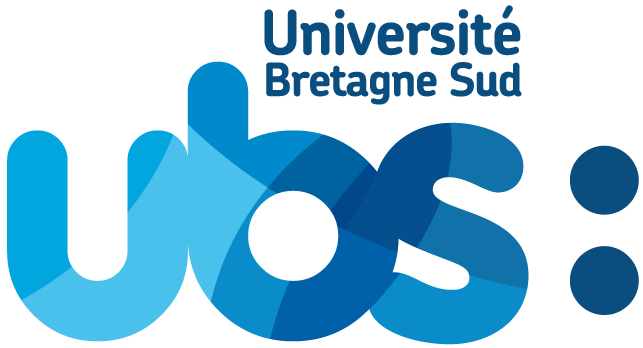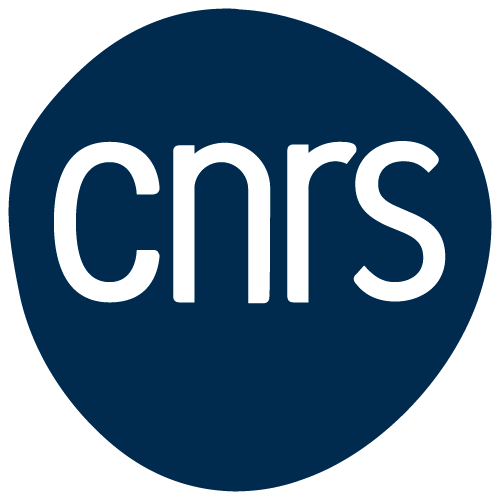Le séminaire brestois des doctorant·e·s en mathématiques est un séminaire créé à destination des doctorant·e·s. Il a habituellement lieu le lundi à 14h, dans la salle H118.
N'hésitez pas à vous joindre à nous ! En bonus, les exposés sont suivis d'une pause café-thé avec un gâteau.
Contact : laurine.weibel@univ-brest.fr
Septembre 2025
- 15 et 22 septembre : Mini-présentations
Octobre 2025
Novembre 2025
- 17 novembre : Stéphane Castanheira (IRMAR)
TBA
Décembre 2025
- 8 décembre : Tooryanand Seetohul (IRMAR)
TBA
Séminaires passés:
Juillet 2025
- 7 juillet : Vincent Alouin (IMB)
Classification des représentations galoisiennes p-adiques d'un corps local
Juin 2025
- 16 juin : Thibault Chailleux (LAREMA)
Géométrie semi-algébrique et Théorie de Morse
La Théorie de Morse permet de déterminer la topologie d'une variété lisse compacte M à partir de fonctions dites de Morse sur M, donnant lieu à la formule de Poincaré-Hopf qui relie la caractéristique d'Euler d'une variété aux indices de Morse des points critiques de ces fonctions. Lorsque M n'est pas lisse, l'indice n'est cependant pas bien défini, et lorsque M est fermé et non-compact, on ne possède même pas de contrôle sur le nombre de points critiques des fonctions de Morse.
En considérant des ensembles semi-algébriques, il est néanmoins possible de se passer de ces deux hypothèses en généralisant la notion d'indice. Après avoir défini et vu quelques propriétés intéressantes des ensembles semi-algébriques, nous définirons les notions nécessaire de Théorie de Morse dans le cas lisse, puis nous les transposerons au cas des ensembles semi-algébriques afin d'obtenir une formule de Poincaré-Hopf dans le cas semi-algébrique lisse fermé (non compact).
- 24 juin : Pauline Bonnardot
Le théorème de Denjoy-Wolf
Salomé Le Stum
Écrire l'électromagnétisme à l'aide des algèbres de Clifford
Mai 2025
- 19 mai : Paulin Bruneau (LMBA)
Conditions nécessaires d’optimalité pour un problème de contrôle impulsionnel
La théorie du contrôle étudie les systèmes dynamiques sur lesquels on peut agir par un contrôle. L’objectif principal est de déterminer un contrôle et une trajectoire associés permettant de faire évoluer un système d’un état initial vers un état final, tout en respectant d’éventuelles contraintes. Lorsque l’une de ces contraintes est exprimée sous forme d’un coût à minimiser, on parle alors de contrôle optimal.
Dans ce séminaire, nous commencerons par introduire le cadre général du contrôle optimal. Nous nous focaliserons ensuite sur l’étude des conditions nécessaires d’optimalité, en exposant les outils classiques permettant de les obtenir. Enfin, nous sortirons du cadre standard pour aborder un problème de contrôle impulsionnel, que nous analyserons à travers deux approches distinctes, afin de comparer les conditions d’optimalité qui en découlent.
- 12 mai : Antoine Dequay (IRMAR)
Cryptographie à base d'isogénies : des courbes elliptiques aux variétés abéliennes
L'ANSSI nous dit que "L'impact à grande échelle d'un potentiel ordinateur quantique sur nos infrastructures numériques actuelles se traduirait notamment par un effondrement de la sécurité de la cryptographie à clé publique actuellement déployée." Cette motivation nous donne l'occasion de nous pencher sur la cryptographie post-quantique. On s'attardera en particulier sur la cryptographie à base d'isogénies basée sur les courbes elliptiques, pour mieux ouvrir vers la notion de variété abélienne.
- 5 mai : Elias Nohra (LPSM)
Autour de la mesure de Yang—Mills en deux dimensions
La théorie de Yang–Mills est une théorie quantique des champs (QFT) qui vise à décrire les interactions entre les particules élémentaires. Comme toute QFT, elle peut s'exprimer à l'aide d'intégrales de chemins de Feynman : des intégrales par rapport à des « mesures de probabilité » formelles sur des espaces de dimension infinie, qui, dans ce cas, correspondent à l'espace de connexions modulo le groupe de jauge d'un fibré principal. La construction mathématique rigoureuse de ces mesures est souvent un véritable défi.
Dans cet exposé, nous commencerons par une brève introduction à la théorie de Yang–Mills et à ses observables. Nous verrons ensuite comment, en dimension 2, cette mesure peut être construite rigoureusement comme la loi d'un processus de déplacements parallèles aléatoires, suivant les travaux de Driver, Lévy, Sengupta, etc. Enfin, nous aborderons les travaux plus récents de Chevyrev, qui définissent cette mesure comme la loi d’une variable aléatoire prenant ses valeurs dans un espace de connexions distributionnelles bien choisi.
Avril 2025
- 28-30 avril : Rencontres doctorales Lebesgue
Pour plus de détails, voir https://www.lebesgue.fr/fr/RDL2025.
Mars 2025
- 24 mars : Jérémy Zurcher (Laboratoire Paul Painlevé)
Introduction à la méthode de Nourdin-Peccati
Le Théorème Central Limite Classique nous affirme que la moyenne empirique d'une suite indépendante et identiquement distribuée de variables aléatoires réelles converge vers une gaussienne, sous normalisation. Il s'agit du Théorème Limite le plus connu, et qui engendre un domaine qui est encore aujourd'hui au cœur de la recherche actuelle en Probabilités. De manière générale, on appelle Théorème Limite tout énoncé dont la conclusion fait intervenir une convergence en loi. Je compte présenter un Théorème Limite particulier, nommé Théorème du Quatrième Moment, qui évoque des conditions pour conclure en une convergence en loi vers la gaussienne standard pour des variables aléatoires appartenant à un certain espace nommé chaos de Wiener. Pour cela, je vais présenter l'approche de Nourdin et Peccati faisant intervenir le calcul de Malliavin et la méthode de Stein. Le premier est une théorie de calcul différentiel par rapport à ce qu'on nomme un processus isonormal tandis que la deuxième est un ensemble de techniques permettant d'estimer des distances entre une loi et la loi normale.
- 3 mars : Baptiste Guillaud (LMBA)
Les lois infiniment divisibles
Les lois infiniment divisibles apparaissent comme loi de la somme d'une infinité de termes indépendants et asymptotiquement négligeables. Dans cet exposé, j'énoncerai quelques propriétés de ces lois. Je présenterai ensuite un résultat qui décrit l'ensemble des lois infiniment divisibles, ainsi qu'un critère de convergence vers une loi infiniment divisible donnée. J'illustrerai mon propos avec plusieurs exemples.
Janvier 2025
- 20 janvier : Mathieu Vallée (LIPN)
Matrices totalement équimodulaires et triangulations de cones polyédraux.
Après une courte introduction à la géométrie polyédrale et à l'optimisation combinatoire, j’introduirai la notion de matrices totalement équimodulaires (TE), qui généralise les matrices totalement unimodulaires (TU), concernant un "joli comportement" des sous-déterminants de la matrice.
On identifie une matrice par l'ensemble de vecteurs composé de ses lignes. Un ensemble de vecteurs est TE si sa matrice associée est TE. Après avoir donné plusieurs exemples, d'ensembles de vecteurs TE, j'énoncerai un théorème de décomposition dans le cas ou l'ensemble est libre.
Nous allons ensuite nous servir de ce théorème pour analyser les cones générés par ces tels ensembles.
Premièrement nous trouverons leurs bases de Hilbert, qui est l'ensemble minimal générant les points entier du cone par des coefficients entier positifs.
Finalement, nous trouverons une triangulation unimodulaire régulière de Hilbert pour (presque) chaque tel cone.
- 13 janvier : Julie Reina (LMBA)
Introduction aux scindements et diagrammes de Heegaard.
Nous commencerons par présenter la décomposition en anses pour une variété compacte de dimension n ⩽ 3 ainsi que différentes manipulations sur une telle décomposition. Ensuite, on se concentrera sur les variétés fermées orientables en dimension 3 pour présenter les scindements de Heegaard. Ceci nous permettra d'une part d'énoncer le théorème d'unicité de Reidemeister-Singer et d'autre part de définir les diagrammes de Heegaard, qui permettent de dessiner en 3 dimensions une 3-variété fermée orientable.
Décembre 2024
- 9 décembre : Fabrice Étienne (IMB)
Calcul du groupe des classes d'un corps de nombre par induction, avec des relations de normes généralisées.
Dans cet exposé, on définira le groupe des classes d'un corps de nombre, qui est un objet important en théorie des nombres et dans certaines branches de la cryptographie.
Étant donné un corps de nombre K, Il existe un algorithmes classique pour calculer son groupe des classes Cl(K), l'algorithme de Buchmann. Cependant, la complexité est exponentielle en le degré d du corps K.
Le but de la deuxième partie de l'exposé sera d'expliquer le fonctionnement d'algorithmes qui permettent de calculer le groupe des classes d'un corps de nombre K de grand degré de manière inductive, en se ramenant au même calcul sur d'autres corps de degrés plus petits.
Ces méthodes utilisent des objets appelés relations de normes et relations de normes généralisées, qui sont des relations dans le G-module Q|LS|G|RS|, où G est le groupe de Galois de la cloture galoisienne \Tilde|LF|K|RF| de K.
- 2 décembre : Tino Laidin (LMBA)
Équations cinétiques et approximation numérique
Les systèmes de particules en interaction apparaissent dans de nombreux domaines de la physique et de la biologie. Les modèles qui nous intéressent vont de la dynamique des gaz aux semi-conducteurs, en passant par la chimiotaxie.
Ces systèmes peuvent être décrits à trois échelles principales : particulaire (microscopique), cinétique (mésoscopique) et fluide (macroscopique). Cette présentation se concentrera sur la description cinétique. Dans ce contexte, l'inconnue est la fonction de distribution des particules, qui est la solution d'une équation aux dérivées partielles. On s'intéressera aussi au lien entre les échelles mésoscopique et macroscopique.
En général, ce type EDP est difficile à résoudre analytiquement, et il arrive parfois qu'aucune solution explicite ne soit disponible. En discrétisant le problème, on peut alors concevoir une méthode numérique pour approcher la solution. Dans cet exposé, je présenterai la méthode des Volumes Finis. J'illustrerai au travers de simulations des propriétés de cette méthode dans un cas simple puis appliqué à des équations cinétiques.
Novembre 2024
- 25 novembre : Lucas Pinsard Morel (LMJL)
Étude de flots d'applications moments sur les tores de dimension réelle 2 et 4
Le but de cet exposé est d'explorer la topologie globale du groupe des symplectomorphismes lisses du tore de dimension 4 grâce à un flot d'application moment. Cette dernière sert à réaliser le dit groupe comme son lieu de zéros. Je traiterai le cas du tore de dimension 2 comme exemple introductif. Le flot n'étant pas elliptique, j'expliquerai alors comment utiliser un argument de DuTurck exploitant les symétries de l'équation afin de la transformer en un problème parabolique. J'en déduirai alors un résultat d'existence en temps court du flot.
- 4 novembre : Théo Gherdaoui (IRMAR)
Obstructions quadratiques à la contrôlabilité locale en temps petit pour les systèmes multi-commandés.
Dans cet exposé, nous présenterons une condition nécessaire à la contrôlabilité locale en temps petit des systèmes de contrôle affines multi-commandés. Cette condition fait intervenir l'évaluation en zéro des crochets de Lie des champs de vecteurs : elle implique à la fois leur direction et leur amplitude. La preuve est une adaptation au cas à entrées multiples d'une méthode générale introduite dans le cas des systèmes mono-contrôlés. Elle repose sur une formule de représentation de type Magnus : l'état est approximé par une combinaison linéaire de l'évaluation en zéro des crochets de Lie, dont les coefficients sont des fonctionnels du temps et des contrôles. Enfin, les obstructions résultent des inégalités d'interpolation de Gagliardo-Nirenberg.
Octobre 2024
- 21 octobre : Auriane Gabaut (INRIA)
Regularized estimation of non-linear mixed effect models in the presence of high-dimensional biomarkers
Mechanistic models are valuable for understanding the dynamic interactions between cell populations. However, achieving model identifiability often requires observations across multiple compartments, information that we believe could be inferred from high-dimensional transcriptomic data. Thus we propose a statistical method to jointly estimate parameters of a structural mechanistic model involving compartments defined as latent processes, and the relationship between these compartments and high-dimensional biomarkers. Our primary objective is to identify relevant biomarkers by regularizing the parameters linking them to the latent compartments while simultaneously estimating the population parameters from our mechanistic model.
To achieve this, we employ an iterative algorithm for Lasso-penalized maximum likelihood estimation |LS|Tibshirani, 1996|RS|. This method, previously studied for joint models incorporating high-dimensional covariates in Cox models |LS|Caillebotte et al., 2024|RS|, is adapted here to integrate latent processes within a mechanistic framework to capture unobserved dynamic variables that play a crucial role.
The estimation algorithm iterates between a regularization step and a mechanistic inference step with the overall goal to maximize the penalized likelihood of the model. In the regularization step, we update the coefficients associating the latent compartment to the biomarkers. Updates to the regularization parameters are derived from setting the first derivatives of the penalized log-likelihood to zero, with approximations obtained via second-order Taylor developpement.The mechanistic inference step focuses on estimating the mechanistic parameters using the Stochastic Approximation Expectation-Maximization (SAEM) algorithm |LS|Dempster et al., 1977; Delyon et al., 1999|RS|, implemented through the Monolix software |LS|Kuhn & Lavielle, 2005, Monolix 2023R1, Lixoft SAS, a Simulations Plus company|RS|, considering the updated regularized coefficients from the first step.
Auteurs : Auriane Gabaut, Ariane Bercu, Mélanie Prague, Cécile Proust-Lima
Affiliation :
1. Université de Bordeaux, Inria, Inserm, Bordeaux Population Health Research Center, SISTM Team
2. Université de Bordeaux, Inserm, Bordeaux Population Health Research Center, BIOSTAT Team
3. Vaccine Research Institute, Créteil
- 14 octobre : Raphaël Ravasse (LOPS)
Différentes approches de l'équilibre chez les tourbillons ponctuels.
On peut modéliser simplement un système de tourbillons par des points en lesquels s'appliquent des forces. Ceux-ci interagissent entre eux, et une idée qu'on peut explorer est de trouver les conditions dans lesquelles ces tourbillons ne bougent pas les uns par rapport aux autres.
- 4 octobre : Milan Arrouas (IRMAR)
Groupes de biholomorphismes de tores de dimension complexe deux.
Un tore complexe de dimension n est le quotient d'un C-espace vectoriel par un réseau. A translation près, son groupe de biholomorphisme -d'application holomorphes d'inverse holomorphe- s'identifie avec les applications C-linéaire préservant le réseau. En général, ce groupe est petit, souvent fini. Cependant, il existe des cas ou ce groupe est beaucoup plus riche. Cela dépend de deux facteurs: de la position du réseau par rapport à la structure complexe, et de l'arithmétique du réseau. En dimension deux, une classification complète existe, que nous dresseront partiellement. Cela vous parait trop complexe? Vous avez tore voyons! ;)
Septembre 2024
- 16 et 23 septembre : Mini-présentations par les doctorant·e·s du LMBA
Juin 2024
- 10 juin : Louis Dailly (IRMAR - Institut de Mathématiques de Toulouse)
Uniformisation et orbifolds.
Lorsqu'on dispose d'une variété complexe compacte connexe, une question naturelle est de décrire son revêtement universel : ce sont les problèmes d'uniformisation. Au début du 20e siècle, Poincaré et Koebe ont étabi une telle description pour les surfaces de Riemann, et cette description dépend du genre de la surface.
D'un autre côté, lorsqu'un groupe G agit par biholomorphismes sur une variété complexe compacte X de manière libre et propre, l'application quotient donne un revêtement et l'espace des orbites est naturellement muni d'une structure de variété qui rende cette application quotient holomorphe. Si on omet l'hypothèse de liberté, on obtient des espaces quotients qui sont munies de singularités. Les objets qui semblent particulièrement adaptés pour ces questions d'uniformisation sont les orbifolds, espaces topologiques dont les modèles locaux sont des quotients de C^n par un groupe fini agissant linéairement. Peut-on adapter les résultats de Poincaré et Koebe dans le cadre orbifold et en dimension supérieure ?
- 5 juin : Louis Lerey (LMBA)
A convolutional sparse coding algorithm and its application for spike sorting.
Convolutional sparse coding (CSC) aims to approximate a signal by a sparse combination of short signal templates. I will talk about the CSC algorithm with a l0 penalty and a no-overlap constraint (CSC-l0 N.O.) and how it differs from traditional CSC-l1 algorithms in terms of complexity and optimization. This method can be used in the medical field to identify characteristic patterns in time series such as in electrophysiological signal for example because each neuron has a specific action potential waveform. I will present how to sort detected action potential spikes with the CSC-l0 N.O. method. The full algorithm presented starts from a raw recording and individually identify the activity of multiple neurons.
Mai 2024
- 27 mai : Léo Bartoli
Théorie des locales et topologie sans point.
- 13 mai : Mattia Morbello (IRMAR)
Comment les géomètres complexes font des EDO sur une courbe ?
Naïvement, on pourrait dire que historiquement certains problèmes de géométrie découlent des problèmes d'analyse auxquels on a rajouté de la topologie, de la courbure et certaines rigidités, comme notamment celles des polynômes et des fonctions holomorphes. Dans cet exposé on essaye de rajouter ces trois contraintes à l'étude des EDO sur les plus petites variétés complexes : les courbes complexes (autrement dit les surfaces de Riemann).
- 7 mai : Maxence Petit (LPSM)
Reflected Brownian Motion and Martin boundary
This presentation will first introduce the planar reflected Brownian motion in a wedge : this is a stochastic process acting like a Brownian motion inside a quadrant but reflected obliquely when it reaches the edges. Then, I will talk about transient Markov processes, i.e. processes that "go to infinity". This is a case for example for drifted Brownian motions or standard Brownian motion in dimension 3 or more. The transience property for Markov processes is similar to the notion for discrete-time Markov chains. For transient Markov processes, we will talk about the Martin boundary which are the "points at infinity" and give a compactification of the state space. This object allows us to find all the harmonic functions satisfying a certain boundary condition. Finally, we will see the Martin boundary of the Reflected Brownian motion when this process is transient.
Avril 2024
- 22 avril : Rencontres doctorales Lebesgue
Pour plus de détails, voir https://www.lebesgue.fr/fr/RDL2024.
15 avril : Mini-présentations par les stagiaires
- 8 avril : Rémi Delloque (LMBA)
Correspondance de Kobayashi-Hitchin
Mars 2024
- 25 mars : Thierno Mamadou Balde (LMBA)
The analysis of non-overlapping adhesion models.
- 6 mars : Majid Lagnaoui (LMBA)
Niveau de fleuve et convergence en loi.
Février 2024
- 19 février : Laurine Weibel (LMBA)
Hyperbolicity, orbifolds and finiteness results.
Janvier 2024
- 31 janvier : Présentation du séminaire et de ses partipant·e·s




